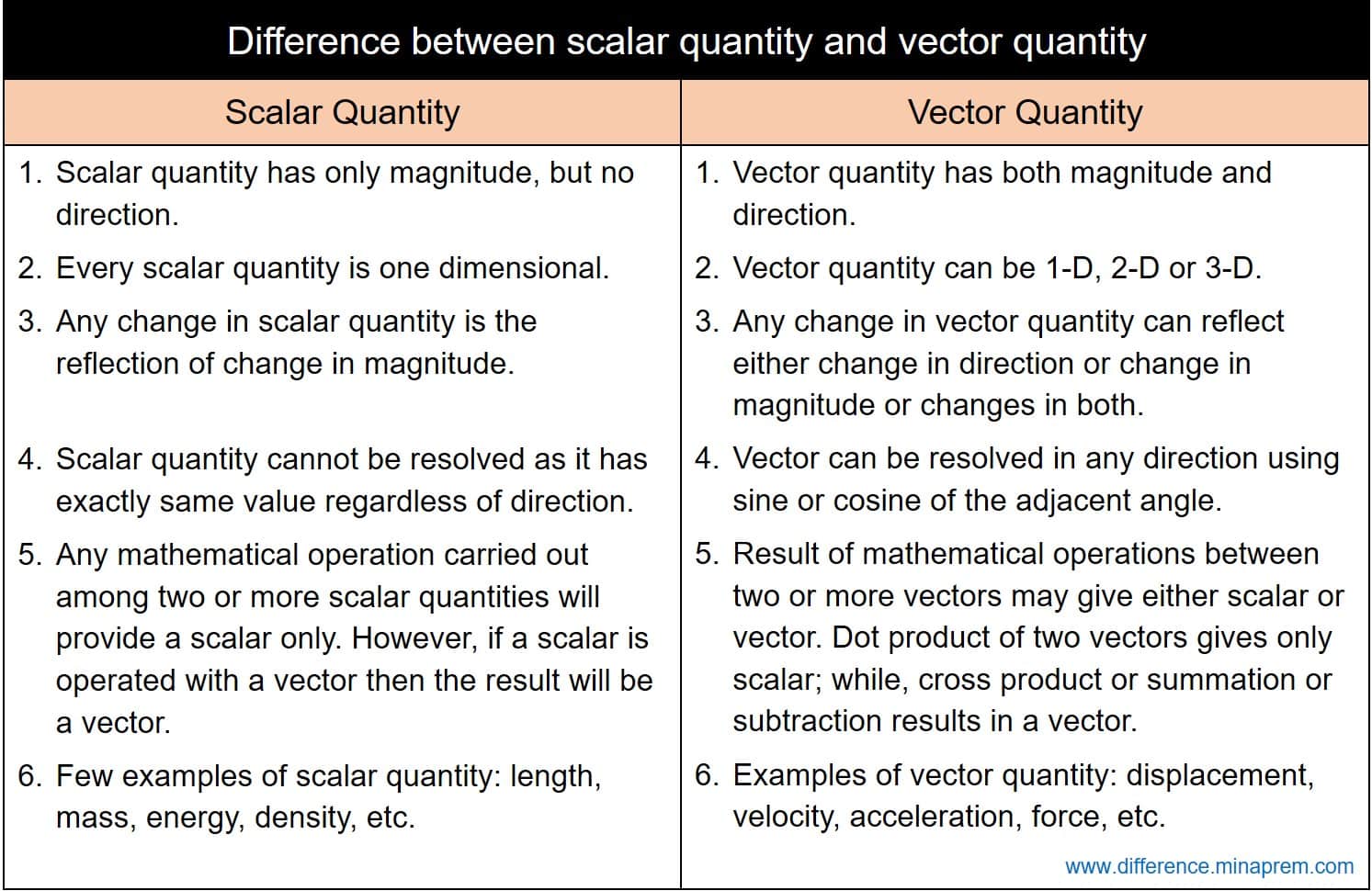Every scientific explanation is realized with the aid of a number of physical quantities — each expresses a special meaning and significance in that context. By definition, a physical quantity is measurable and quantifiable physical property that carries unique information with it. Based on the dependency nature, such quantities can be of two types — fundamental and derived. A fundamental quantity is one that is independent of other properties; while, a derived quantity depends on other fundamental or derived properties. Some of these fundamental and derived quantities carry a particular direction of it application with it; while for others, no particular direction is appended. Based on the dependency of direction, physical quantities can be classified into two categories — scalar and vector. A scalar quantity is one that has only magnitude and no direction; so it is merely a number accompanied by corresponding unit. For example, length, mass, duration, speed, etc. are scalars, so they have no direction. In every direction its value will be exactly same. So every scalar is an one dimensional parameter. Consequently any change in scalar quantity reflects only change in magnitude as no direction is associated with it.
A vector quantity, on the other hand, mandatorily has magnitude with unit and a specific direction. So specifying the direction of action along with its value or magnitude is mandatory while defining or stating a vector quantity. Displacement, weight, force, velocity, etc. are vectors, and thus have specific direction of their application. So vector quantities can be either one dimensional, two dimensional or three dimensional parameters. Any change in the vector quantity reflects either change in magnitude, change in direction or change in both. Since every vector has a specific direction of its application, to find out its intensity in other direction, vector can be resolved with the help sine or cosine of adjacent angles (vector resolution). Since scalar has no specific direction of application, in every direction its value will be exactly same (basically no need to resolve it). Various similarities and differences between scalar quantity and vector quantity are given below in table format.
Similarities between scalar and vector
- Both scalar quantity and vector quantity express certain physical quantity.
- Both scalar quantities and vector quantities are measurable (can be measured using suitable instrument) and quantifiable (can be expressed as numerical magnitude with corresponding unit of measurement).
- Both scalar quantities and vector quantities have certain finite magnitude.
- Both scalar quantities and vector quantities have specific dimension and unit.
Differences between scalar and vector
| Scalar Quantity | Vector Quantity |
|---|---|
| Scalar quantity has only magnitude, but no direction. | Vector quantity has both magnitude and direction. |
| Every scalar quantity is one dimensional. | Vector quantity can be one, two or three dimensional. |
| Any change in scalar quantity is the reflection of change in magnitude. | Any change in vector quantity can reflect either change in direction or change in magnitude or changes in both. |
| Scalar quantity cannot be resolved as it has exactly same value regardless of direction. | Vector quantity can be resolved in any direction using the sine or cosine of adjacent angle. |
| Any mathematical operation carried out among two or more scalar quantities will provide a scalar only. However, if a scalar is operated with a vector then the result will be a vector. | Result of mathematical operations between two or more vectors may give either scalar or vector. For example, dot product of two vectors gives only scalar; while, cross product or summation or subtraction between two vectors results in a vector. |
Few examples of scalar quantity:
|
Few examples of vector quantity:
|
